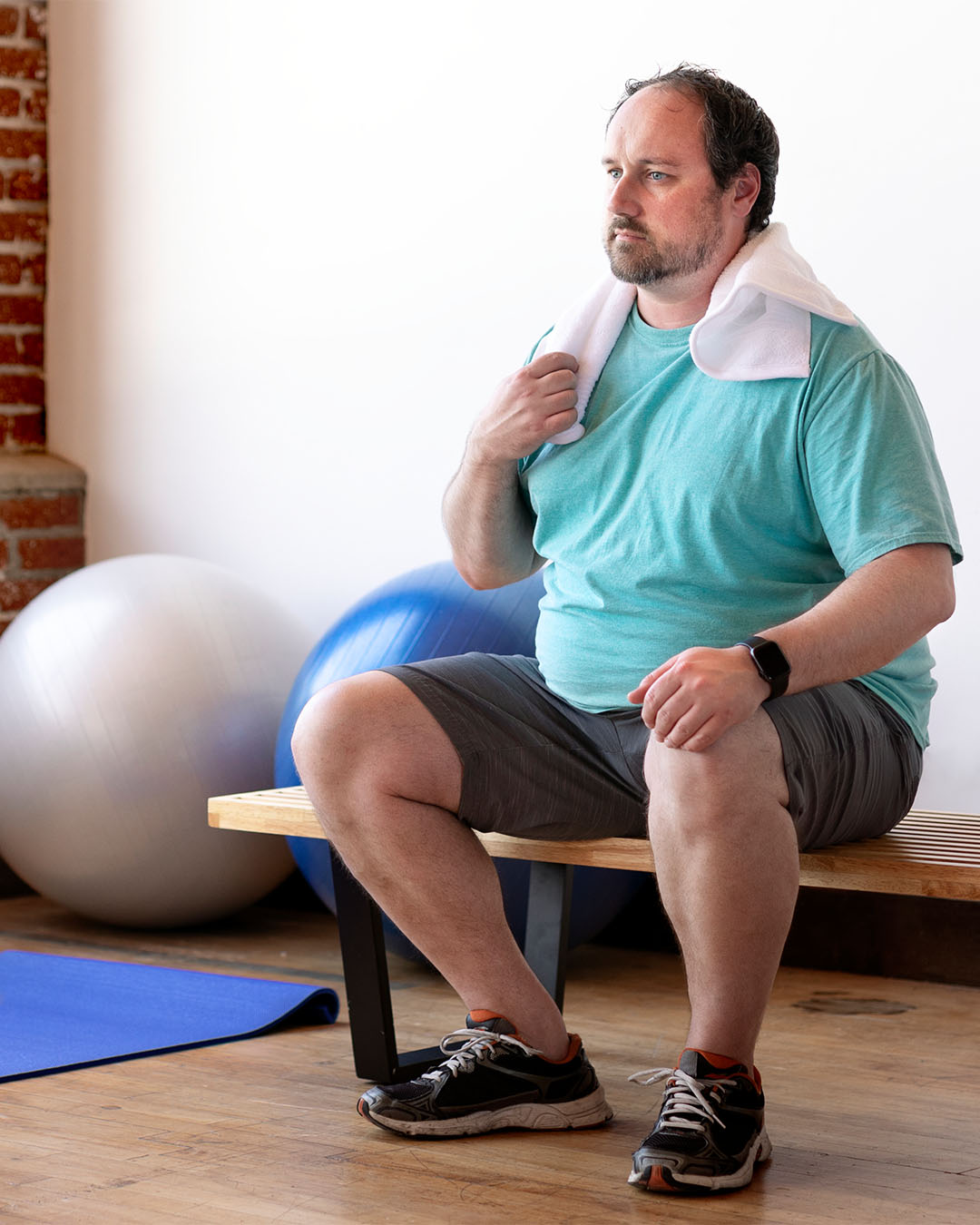The Effects of Detraining
We all know working out is very beneficial to our health. In fact, many studies have shown big improvements in strength, power, hypertrophy, flexibility, and bone density with just a few weeks of working out; but, how about detraining? What happens when you stop working out? How long before your gains start to disappear? And what can you do to stop it? Keep reading to learn more.

Resistance Training
When you stop working out, we know muscles atrophy (become smaller) and lose strength; but, how long does it take? Tavares et al. (2017) showed that there was significant reduction after 8 weeks. Two different groups, one which worked out once a week, and a second group which worked out twice a week, retained their strength. The third group, which did NOT exercise at all, lost significant strength and had a reduction in muscle cross sectional area.
Another study by Lovell et al. (2010) showed that after 4 weeks of detraining, older men lost all the strength they gained after their 8-week training program. That’s a bummer, but the data shows that your gains start to dissipate after a few weeks of detraining.
So hit the weights and make sure you’re also eating the right amount of protein too! How much protein do you need? It depends on your goals and your activity. Click on the image below to find out how much Protein You Need.

Prevent Atrophy
Nobody wants to lose size and strength, after all, it took years lots of hard work to finally see the gains. What kind we do to prevent a reduction in size and strength? If you want to keep your gains, your goal should be to work out all your muscles at least once a week, preferably twice per week. You can easily accomplish this goal with one workout. Perform exercises that work out all your major muscles: legs, chest, back, shoulders, arms, and core. When you have more time or more energy, you can always add more exercise to your plan.
Home Workouts
Most of us prefer going to the gym. There's more equipment and you get to get out of the house. Cabin fever is real thing...especially if you also work from home. But we understand sometimes you can't make it to the gym. The next best thing you can do is grab some small weights and work out all your muscles at home. Below is a video that demonstrates exercises for all your major muscles in just a few minutes. Click the image for the exercise demos.

Cardiovascular Training
If you think you’re losing energy after a few weeks of skipping your workouts, you’re probably right. Toraman et al. (2005) showed the cardiovascular gains start to disappear in a as little as two weeks. But it seems to hit elite athletes even faster! Costill et al. (1985) showed that performance may suffer after only 1 week of detraining for competitive swimmers. Biopsies of their deltoids showed a 50% reduction in respiratory capacity after only 1 week. That lackluster feeling after a few weeks of skipping workouts is real! Therefore, just like resistance training, your goal should be to perform cardiovascular exercise at least once per week...preferably twice.
Speaking of cardio, are you bored with your current workouts? Want to try something new? A great way to change up your routine, burn fat, and increase your cardiovascular endurance might be High Intensity Interval Training, or HIIT for short. We've written an article describing the workouts and all the benefits. Click on the image below to learn more about HIIT.

Bone Density
Muscles are important but let's not forget about our bones. Shimamura et al. (2002) was able to show that detraining also induced a reduction in bone mass in the tibia of previously exercised rats. Initially, in the seven weeks of training, the subjects all gained bone density in the tibia from running. After four weeks of doing nothing, the poor mice lost bone density in their previously strong tibias.
I know you're not a mouse, but experts believe that’s pretty similar to what happens to us after skipping workouts. There is a direct correlation between active body parts and bone density. You must continue to exercise all body parts to keep, or improve, bone density throughout your body.
Furthermore, women, especially older women, need to include resistance training in their exercise routines to maintain or improve bone density. Click this link to read all the benefits of Women and Weight Training.
Want to learn more about exercise science and sports nutrition? Click on the image below to explore all of our classes.

Flexibility Training
There aren’t a ton of studies on detraining and flexibility but as you may have guessed, flexibility also decreases after weeks of detraining. The same study by Toraman et al. (2005) showed that flexibility decreases after two to six weeks of detraining depending on the subject’s age. Younger subjects tended to hang on to their improvements a little longer than the older subjects, but ultimately, we all lose our flexibility gains. High intensity workouts seem to be best for keep flexibility gains. And of course, stretching after all your workouts will also help you keep all your flexibility gains.
Stretching is important. We've outlined all the benefits in a flexibility training article we wrote. Click this link to learn more about flexibility and stretching.
And, if you need help with an exercise plan AND/OR a nutrition plan, click the image below to contact a PFTA certified personal trainer. You have nothing to lose but fat!

Knowledge is Power
And if you want more tips on exercise and nutrition, add your email below. You'll receive weekly tips directly to your inbox. Plus, you'll also receive the occasional coupon code for our classes.
Summary
Detraining is real. The evidence supports that skipping weeks, and months, of workouts will start to lead back toward your pre-training self. But everyone is different and that is mainly due to the intensities of the workouts. High intensity exercisers may limit the effects of detraining more than their lower intensity counterparts. The best thing to do is to exercise at least once per week, but preferably twice per week, to retain your gains. It’s not always easy to work out every week; but, just a little bit every few days will at least help to maintain your gains until you are ready to make a full commitment back to the gym.
Need a "pick me up" to get started? Click this link to read about the Benefits of Caffeine with Your Workouts. And for my favorite "pick me up", click the image below. Happy health and happy training!

Written By
RAescobar, PFTA instructor and personal trainer
Sources:
Costill, D.L. et al. Metabolic characteristics of skeletal muscle during detraining from competitive swimming. Medicine and Science In Sports And Exercise, [s. l.], v. 17, n. 3, p. 339–343, 1985.
Lovell, D. I.; Cuneo, R.; Gass, G. C. The effect of strength training and short-term detraining on maximum force and the rate of force development of older men. European Journal of Applied Physiology, [s. l.], v. 109, n. 3, p. 429–435, 2010.
Shimamura, C. et al. Effect of decreased physical activity on bone mass in exercise-trained young rats. Journal Of Orthopaedic Science: Official Journal Of The Japanese Orthopaedic Association, [s. l.], v. 7, n. 3, p. 358–363, 2002.
Tavares, L. D. et al. Effects of different strength training frequencies during reduced training period on strength and muscle cross-sectional area. European Journal Of Sport Science, [s. l.], v. 17, n. 6, p. 665–672, 2017.
Toraman, N.F.; Ayceman, N. Effects of six weeks of detraining on retention of functional fitness of old people after nine weeks of multicomponent training. British Journal of Sports Medicine, [s. l.], v. 39, n. 8, p. 565–568, 2005.